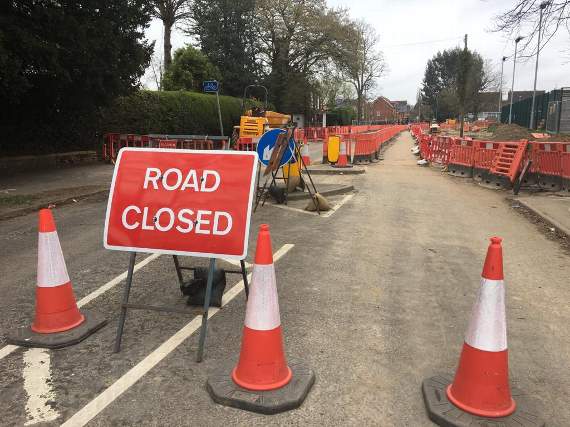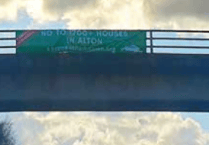A RESIDENT’S Freedom of Information (FOI) request into the roadworks at the Anstey Road/Lane junction has revealed “several inaccuracies in the data and decision making” for the huge scheme which has cut Alton in two since February.
The Alton man, who wishes to remain anonymous, obtained a traffic study from Hampshire County Council under the Freedom of Information Act.
It revealed the project had suffered “significant complications” after it was discovered “gas, electricity and telecoms utilities existed under the road after all”.
The resident told the Herald his office was just “three metres” from the junction – and suggested Alton’s congestion problem in the morning rush-hour was not caused by the Anstey Road/Lane interchange, but rather by the traffic lights at the Holybourne junction.
He said: “There is an issue at the Anstey Road/Lane junction in the evening – but only for all of about 15 minutes a day.
“So what you’ve got effectively is a £1.4 million junction being built to solve a 15-minute problem.”
Andrew Joy, Hampshire county councillor for Alton Town, recognised the Holybourne junction does have an effect on traffic, but said: “We still have to sort out the Anstey junction and then subsequently see how it actually impacts the Holybourne junction – then we will address that.
He added: “I am assured the project will achieve its prime objective of relieving most, if not all, peak pressure on the junction.”
A spokesperson for Hampshire County Council said: “We can confirm that, during the course of construction, additional work has been required to lower or move utilities as a result of previously-uncharted services and complications with planned utility diversions.
“This has delayed progress with construction of the scheme and has meant the original completion date (for April) has had to be adjusted.
“We expect the work will be completed substantially towards the end of May or beginning of June.
“The scheme currently in construction will upgrade the junction from a three-way priority junction to a traffic signal-controlled junction.
“The scheme will meet its objectives by mitigating the impact of traffic growth in the area, particularly from nearby residential developments; by increasing the capacity of the junction; reducing congestion; and improving road safety.
“Traffic signal controls and widening the carriageway will enable turning traffic to flow more easily and efficiently.
“A signal-controlled crossing will improve safety for pedestrians and there will be improved provision for cyclists as well.
“While the scheme will improve congestion overall, we acknowledge the scheme will not solve congestion problems arising at other junctions in the area.”




